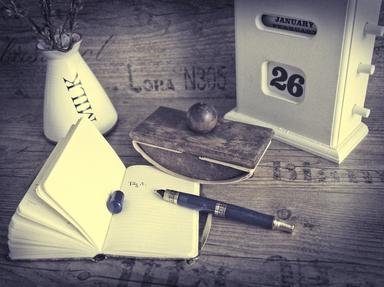Quiz Answer Key and Fun Facts
1. One in the eye for Harold and all that: In which year was the Battle of Hastings fought?
2. Hardly a person was left alive: In which year was the population of London decimated by plague?
3. "Speed, bonny boat, like a bird on the wing..." In which year did Bonnie Prince Charlie land in Scotland to lead a rebellion?
4. "On the green grassy slopes of the Boyne...": The Battle of the Boyne was a defining moment in British and European history: When was it fought?
5. I wonder did they have any cucumber sandwiches when the people of Boston had their famous tea party? In which year did this happen?
6. Knitting needles ready, "off with their heads": In which year was the Bastille stormed?
7. "Kiss me, Hardy": In which year was Admiral Lord Nelson killed on board HMS Victory?
8. "What do you mean "we", paleface"? In which year did General Custer make his last stand at the Little Big Horn?
9. "Washington at Valley Forge/Freezing cold but up spoke George..." In which year did the American Revolutionary War start?
10. "...a giant leap for mankind" In which year did man first walk on the Moon?
11. Camelot Lost: In which year was President John F. Kennedy assassinated?
12. Camelot Regained? In which year was Barack Obama elected President of the USA?
13. "Oh the humanity of it!" In which year did the Hindenburg catch fire and crash?
14. Looking for a land down under: In which year did Europeans first set eyes on Australia?
15. "In a cavern, in a canyon..." In which year did California's most famous gold rush start?
Source: Author
darksplash
This quiz was reviewed by FunTrivia editor
bloomsby before going online.
Any errors found in FunTrivia content are routinely corrected through our feedback system.

